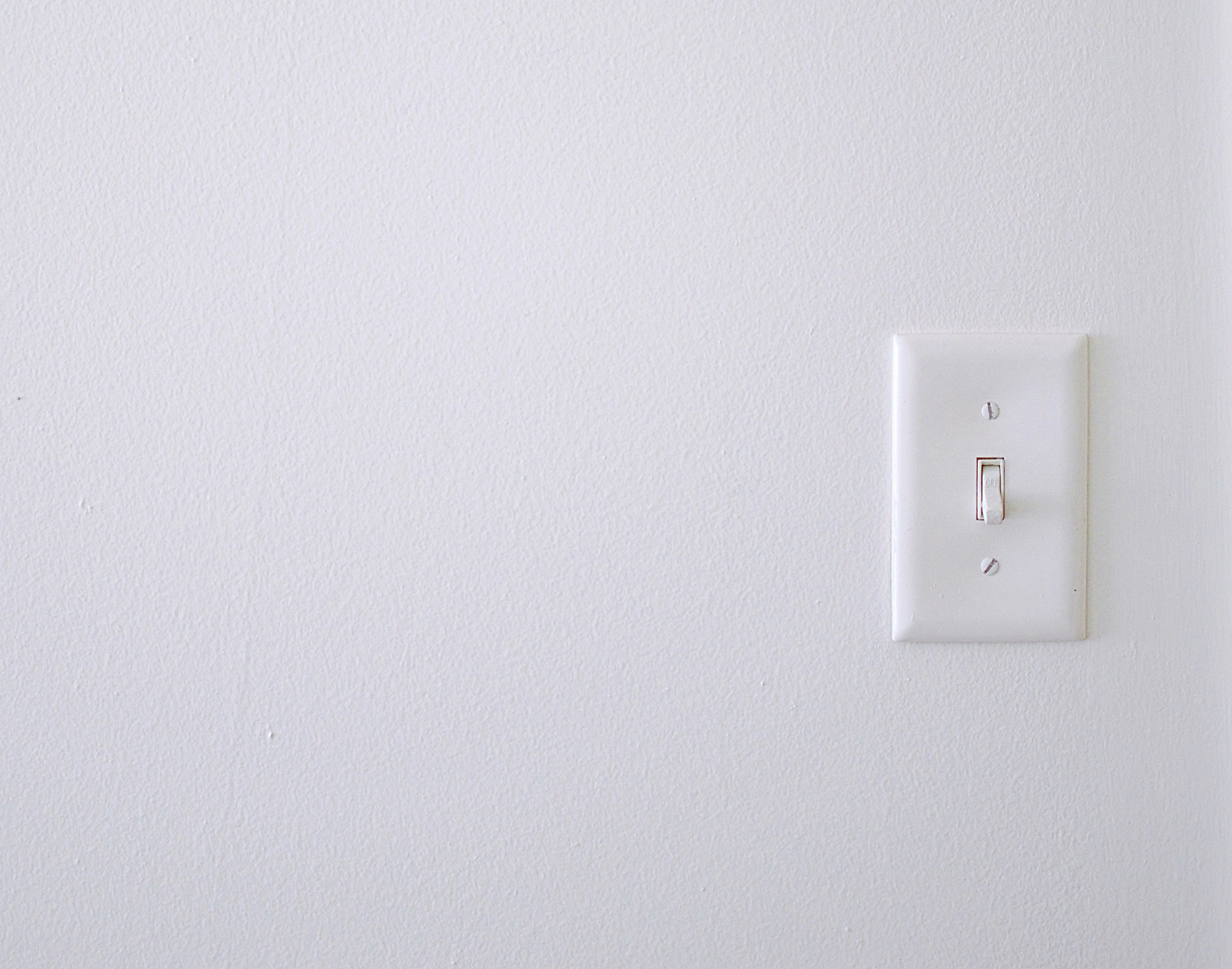The Founder’s Guide to Mental Health & Leadership Performance: Part II - Managing Anxiety

Here in Part II, we dive into tactics and approaches to manage anxiety. What can you do to reduce the fear in your system so as to not be tormented by anxiety? We’ll start at the foundation: your body and physical health.
Physical Foundations
As we seek to better manage our mental and emotional health, the effort begins with managing the physical health that mental and emotional health rest upon. We must manage our body, our nutrition, our exercise and our sleep first. If we neglect our physical health, then mental and emotional health are bound to struggle. Mental and emotional health are doomed if physical health is not actively maintained.
For founders, what typically suffers is exercise and sleep (they of course are related). The busy founder often feels that they don’t have sufficient time for either.
The first thought here is that the founder must understand that you are solving for output, not for time. If you spend lots of time working, but your productivity is low because you are exhausted, then the result is low output. Solve for output, and thus make time for sleep and for exercise.
Everyone’s exercise routine is personal and unique, but it must be regular and habitual. In my observations, however, planning on working out during or after the work day is often problematic. On a daily basis unexpected new issues arise that eat away at time scheduled for working out. Thus I’ve found that the best approach is to work out before work, before any such disturbances can steal your time. You have to get up early.
Sleep also must be prioritized. You must give yourself a good eight hours of sleep per day, and you also have to understand that you need some time to ramp down to be ready for sleep. It can be tempting to keep working and infringe upon these boundaries, and, of course, sometimes it is necessary to do so. But if you chronically deprive yourself of sleep then you are cheating yourself and the business because output will invariably suffer.
Ejecting Thoughts
As mentioned earlier, a core driver of anxiety is excessive negative mental chatter. As a founder, there is too much to do, too much to figure out, and fearful thoughts on all that must be done and all that might fail constantly rattle around in the brain.
A basic approach to contending with these excessive and/or negative thoughts is to work to eject them from the brain. This can be accomplished by having regular opportunities to talk through your thoughts. This can be with a friend, a therapist, a loved one, a coach, or anyone really who can actively listen, and to whom you can be honest and vulnerable. Vocalizing your thinking in these opportunities helps to remove them from the subconscious and to be processed. Through talking them through the thoughts become better understood, less threatening, and have a better chance of settling down. You might also discover ways to take productive action on the thoughts and in that way diminish their debilitating effects.
Instead of speaking your thoughts out loud, you can also eject them by writing them down through a journaling practice. In a journal, you simply can write down your thoughts in a stream-of-consciousness way. Or you can more carefully reason what you write. Either way journaling can help to move your thoughts out of your mind and on to paper. Once they have this expression, they may become less likely to bother you.
Reframing Narratives
As adversity and anxiety become chronic, the founder starts to get repetitive negative thought patterns or narratives in their head. For example a founder might subconsciously develop a narrative that “we never are going to raise the next round; I’m screwed and this startup is going to blow up; I’m not going to be able to support my family; I’m a failure.” As this narrative repeats, it just gets stronger. The saying in neuroscience that “neurons that fire together, wire together” conveys that repeated thought patterns physically alter the brain in ways that make repetition of the narrative more likely.
Reframing narratives thus is an important tool to disrupt these negative patterns and pull them from their pessimism to a more balanced outlook. One powerful reframing tool is a daily gratitude practice. For example tennis champion Novak Djokovic starts every day with a prayer of gratitude. When we are way fixated with the trials of our startup, we often lose sight of the marvels and blessings that are all around us: our family, our health, the beautiful world around us, our peace and prosperity, even just the opportunity to be pursuing the startup. A gratitude practice helps to reframe our negative narratives and helps us recall the bigger picture of our life and how fortunate we are.
Another way to reframe is to confront our catastrophe scenario directly. Given the risk and challenge of a startup, the specter of failure is always looking in our minds. It is always a possibility not too many steps away and the haunting notion of it is the source of most of our fears. We think “if this startup fails, I will have let everyone down, my career will be ruined, my family will be disrupted and devastated, and I’ll never get another chance to really try for my dreams.” But is that really true? Will the end of the venture really be such a disaster? Instead of allowing this ghost of failure to grow and fester in our subconscious, a good reframe is to actually confront that scenario consciously. Is that narrative really correct? We should consider: “If the startup fails, won’t most people, and the people I really care about, see that I’ve tried my best? Yes, it will be disruptive to my and my family’s lives, but I’ll be able to rebound and find another job. And, in time, if I want, I could get another shot at a startup.” Rather than trying to shoo away the catastrophe scenario by working, working, working to try to always make the necessary progress, sometimes it is more helpful to look catastrophe directly in the face, and see it isn’t so bad.
In addition, if you have a spouse and family, and part of your catastrophe includes its impact on them, talk to them directly about that scenario. Are we OK if that happens? Can we make it through? Confront the catastrophe with them, and, in doing so, you help disarm the catastrophe’s power over you.
Awareness of Thoughts
The Zen approach to managing negative thoughts and anxiety is mindfulness. Mindfulness is a broad term but at its essence is developing the ability to discern the difference between yourself (or your awareness) and your thoughts, and, in so doing becoming more aware of your thoughts and becoming able to release your thoughts when they do not serve you.
The classic approach to developing mindfulness is meditation. At its simplest in meditation the founder sits and focuses their attention on their own breath, its sound and its sensation. When the mind strays from the breath into other thoughts (which it always will) and the founder notices the straying, the founder brings their attention back to their breath. In mediation this simply happens over and over again.
Such meditation practice is about building the mental muscle of awareness, and every realization of straying is like a rep or repetition in the gym: you’ve become aware of your thoughts, and you have returned your attention to your present, physical, corporal reality. Now “the bar” will descend again, your thoughts will stray, and you repeat.
Developing mindfulness through meditation takes time and thus patience; it often happens through a daily 15 minute practice. At the outset “progress” is slow, but there’s a satisfaction to just standing up to your own internal mental whirlwind by making some time and space in your mind. Over time you may find that you’ve developed some muscle memory and that, as you ramble internally through some negative rant, that subconsciously you recognize such destructive thinking, you take a breath, and your attention comes to your breath. Such a moment is brief, but building the ability to release negative thoughts moment after moment after moment is a crucial path to progressing mental health.
Remember that what you say, whether out loud or to yourself, matters. We affirm our realities through our own thoughts. If we keep saying “I suck!” or “we are fucking doomed” over and over, then that becomes our reality. Yes much of actual reality itself happens outside of us, but we perceive reality only through our own minds. Thus our perception of reality is a function of our thoughts. Mindfulness allows you to better manage your thoughts and their profound impact.
Releasing Fixation
Few professional pursuits involve such a long journey to a goal as a startup. The ultimate objective for a startup is a combination of getting their product to the world and achieving a successful exit. Though the timing of success varies, the typical outlook is that it takes a decade.
So as a founder you are always peering into the future: you decade-away exit, your five-year plan to achieving your product vision, your annual financial plan, your quarterly revenue goal. You are always striving to pull these anticipated future events into reality: signing a customer, releasing a product, closing an investor. Our attention is constantly drawn into the future, which is the last place your being wants it to be. The healthy, grounded spot for our attention is on the physical present.
Thus as you work on your mindfulness and upon observing your thoughts, be particularly aware of the tendency to fixate on the future. Repeated obsession over future outcomes is the trap that founders will most regularly find themselves in.
Can we always exist in only the present? As modern humans, it is not feasible to not perform any planning of our future, and as founders, we of course must regularly do the same. But there is a difference between say going through the proper process of developing an annual budget and regularly fixating on future outcomes.
When we notice such fixation, we should remember to release those thoughts. A handy reminder is that we only exist in the present, and thus we can only impact our futures by acting in the present. Thus release that obsession with the future and bring your mind back to the present, whether it be on your workout, on your family, or even whatever it is you’re doing at work.
Time & Space
As challenges arise the founder must respond and do what’s necessary to keep the company alive, progressing, and, hopefully, succeeding. Crises and challenges are always emerging, and if the startup is going to persist and thrive, the founder must respond to them. If the founder can effectively implement many of the practices described in this essay, the stress impacts of such constant contesting with adversity can be mitigated. But it is of course unlikely that they’ll be eliminated altogether. Thus it is so important for the founder to give them self physical and mental time and space away from the grind in order to replenish.
Our genetics were formed over millennia and millennia through an existence very different from the modernity we find ourselves in now. For 99% of our species’ existence (and our species’ ancestors’) we lived as hunter-gatherers where it was required that our attention be focused on present physical reality, both of our bodies and of the natural world around us. While the development of our modern world has rapidly altered the circumstances of human existence (in many ways for the better), our genetics evolve much more slowly.
So while at work we are often staring at screens, considering abstract concepts, contemplating future possibilities, and contending with challenges, our beings hunger to return our attention to present physical reality. Such attention can take many forms that depend on the preferences of the founder: playing an instrument, going for a hike, cooking, playing a sport, etc. It’s OK for these endeavors to be challenging as well, but at least they are challenging in a discrete and defined way as opposed to the relatively endless (and often intangible) challenges of a startup. If possible, it’s great for much of this activity to be outside, as, again, it is also where our genetics are most comfortable.
These replenishing activities with focus on present time and your immediate physical space serve to generate time and space within the mind. As a result, crises become less acute, negative thought patterns become less chronic, and you are able to recognize new solutions to challenges that were unavailable to you prior.
.png?width=1000&height=300&name=Toby%20Murdock.com%20Logo%20(1).png)
 By
By


